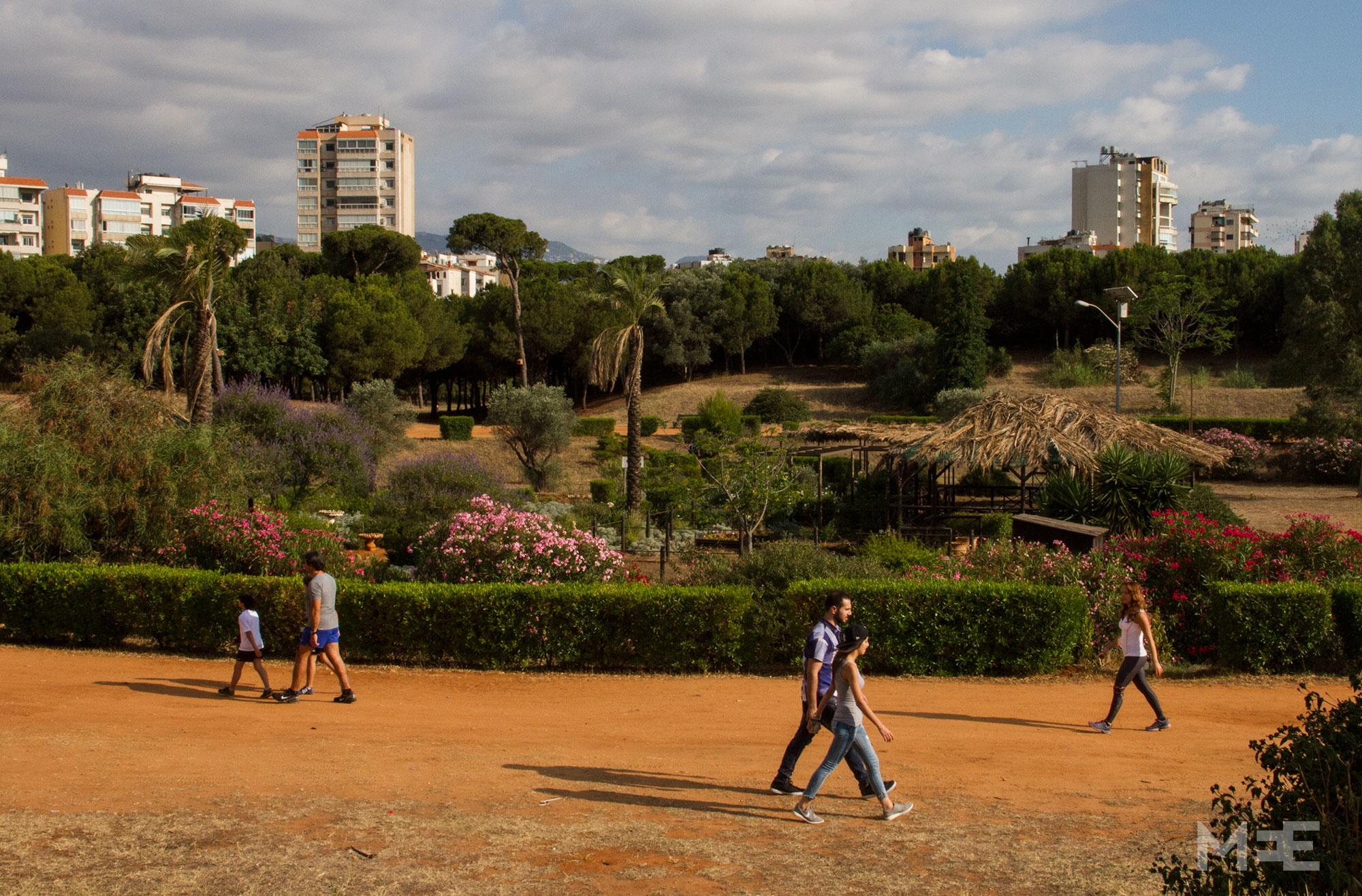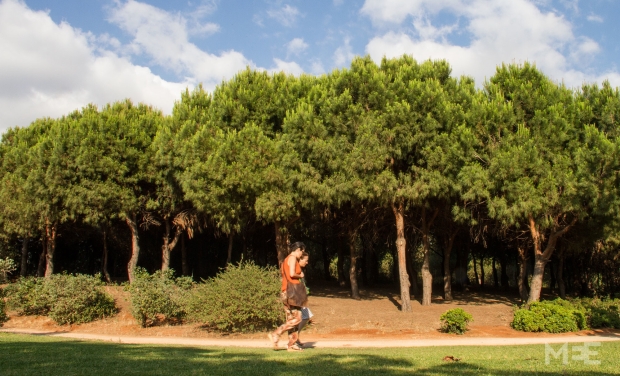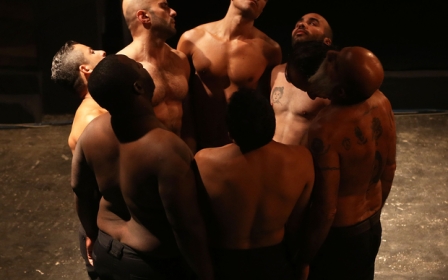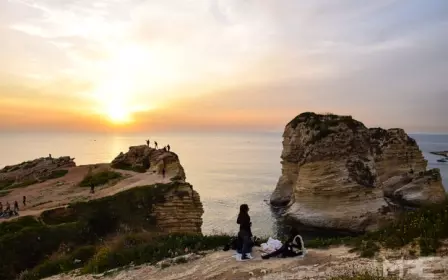From city to coast, taking back Beirut's public spaces

BEIRUT – It had been a long wait. In September 2015, to much media fanfare, Horsh Beirut, the city's largest green space, reopened. Following years of campaigning by activist groups and delays by the authorities after its destruction during the civil war, the 75-acre green oasis once again welcomed strollers, joggers and families looking to get away from the urban bustle.
The park, however, only opened on Saturdays and it wasn’t until this month that Horsh Beirut finally started opening its gates all week long.
The site, also known as Bois des Pins (Pine Forest), was massively bombed during the war. Rehabilitation efforts, including financial support from the Ile-de-France region, began in the early 1990s but progress was slow. By 2010, though the infrastructure was rebuilt and the ecosystem restored, the park gates remained closed. Only foreigners, upon presentation of a passport, and Lebanese citizens over the age of 30 were allowed in.
It would take a further five years and a lengthy rallying of civil society for authorities to agree to a part-time re-opening of the park that runs along the city’s “Green Line” demarcating that split between Christian east Beirut and the largely Muslim west during the Lebanese Civil War (1975-1990).
The youth-led organisation Nahnoo spearheaded the mobilisation. In response to the municipality’s claims that management of Bois des Pins was too difficult and costly, and that the site would deteriorate if visitors were allowed in, Nahnoo activists drew up a management plan and began discussions with the city. According to the organisation’s president, Mohammed Ayoud, the authorities made a series of promises they later reneged on.
“Talks with the municipality began in 2011, at which point, we presented them with a roadmap based on our preliminary research. In 2012, and again in 2013 and 2014, the city assured us they were serious about reopening the park. But they kept stalling. If you ask me, the only thing serious about that commitment was the commitment to privatise it, to open it up to make money.”
At one point, the city actually considered building a stadium inside the park with a seating capacity of 5,000 to 7,000 people. Nahnoo continued campaigning “for a reopening with no private sector involvement”.
Ultimately, it was the new governor of Beirut, Ziad Chbib, appointed in 2014, who would approve the partial, then nearly total reopening of Bois des Pins. It would be open to the public during the week, though only from 8am to 2pm, what Ayoub prefers to see as a glass half-full.
“It was a learning experience. The part-time winter reopening helped us get ready for the fulltime opening. We wanted to start off slowly to guarantee the viability of the project,” he told Middle East Eye.
‘Private area for public use’
Horsh Beirut, symbolic in the struggle to take back public space, has inspired civilian groups to mobilise on other fronts as well, starting with the coast. The Dalieh al-Raouche (the Rocks of Raouche), a coastal site where some Beirut residents have been lucky enough to picnic, swim and fish for decades, has been threatened by a resort project since 2012. The site has been considered a “private area for public use” since the French Mandate (1920-1944) but concessions were only granted to a small number of elite Beirut families, something the activists are determined to reverse.
The Civil Campaign to Protect the Dalieh champions the right of average citizens to access the seacoast, claiming there are significant irregularities in the laws that have made it possible for the rest project to be considered. When plans for building a resort at Dalieh el-Raouche became known, the group came to the fore, presenting documents and archaeological studies supporting the historic character of the area and highlighting its ecological value.
Ghassan Maasri, a member of the movement, spoke about the challenges facing areas like Dalieh, where time-honoured communal practices are overshadowed by a de-facto reality.
“People have had to rediscover Dalieh, because after the war the area was removed from all visual material, from postcards and stamps,” he said. “It was erased from the city’s collective memory as if it had never existed.”
From the outset, the group’s protest actions have received widespread media coverage, and in 2016, the site was added to the World Monuments Fund list, a New York-based non-profit organization dedicated to preserving and protecting endangered ancient and historic sites around the world. Activists have taken this as a sign of hope, and while it doesn’t guarantee the permanent protection of the area, at least for development has been stalled.
Malls: The new public space
According to a study made by the Habib Debs architectural firm, undeveloped land in Beirut went from making up 40 percent of the capital in 1967 to 10 percent in 2000, with the Lebanese capital witnessing a burst of near constant construction since the end of the civil war.
In 1994, the rebuilding of downtown was entrusted to Solidere, a company owned by Rafik Hariri, who was also prime minister at the time. There ensued a succession of extensive urban planning projects aimed at erasing the city’s wartime past by creating a new mixed-faith district and transforming Beirut into a dynamic regional hub for finance and tourism.
But public spaces were ravaged by the fast pace of construction and today, the Lebanese capital boasts barely 0.65 m2 of public park surface area per inhabitant, nowhere near the 10m2 recommended by the World Health Organisation.
In response to this shortage of public space, the late 1990s saw the emergence of malls, which have proven the city’s answer to creating alternatives to public spaces.
“Beirut, which was once a model for the capitals of the Gulf, is being turned into another Dubai,” Professor Liliane Barakat, a geographer at Beirut’s Saint-Joseph University, told MEE.
“Malls, with their wealth of food courts, restaurants, cinemas, and play areas, have become the new downtown for a portion of the Lebanese population. They are also considered safe, which is another important factor.”
The rubbish crisis and the advent of major social movements
Over the years, the grassroots organisations that sprung up to oppose Solidere-style reconstruction projects, have evolved and helped to create a wider environmentalist movement.
Eric Verdeil, a specialist of urban geography who has closely followed protest movement strategies, says the collectives share a common agenda.
“In part, the activists are from similar walks of life. A certain number of Dalieh activists have joined other environmentalist movements protesting the privatisation of the coastline, and pollution,” he said.
“These activists were already widely mobilised for the Bois des Pins. It was the same alliance, between environmentalists and activists for preserving public space, that helped give an impetus to the garbage management protest movement.”
When the Naameh landfill was closed in July 2015 and garbage collection stopped, it was these groups that helped to mobilise tens of thousands of Beirut residents to take to the streets to demand sustainable solutions for waste management. The protests quickly spiralled to become a major social movement, with some protestors going as far as to call for the government to step down over its handling of the situation.
The movement’s demands were widely relayed on social networks; videos parodying the government’s stalling tactics went viral. This use of new technology was not just a question of convenience. It was a way of reaching a different audience: the younger generation. Verdeil, in a 2012 post on his blog Rumor, examined the communication strategies of the Horsh Beirut and Dalieh advocacy campaigns.
“Unlike traditional forms of specialised activism, which rely on political campaigning and targeted lobbying efforts to influence policymakers, this particular video [a protest video called ‘Beirut the Space Between Hope and the Public’] …reflects both a strategic change, aimed at raising awareness and building public support for the Sisyphean task of challenging the many-headed Hydra governing our country, and a broader and more democratic political current appealing to civic intelligence.”
'Taking back public space, naturally'
These were the grounds upon which the Beirut Madinati electoral list, created last year ahead of this May’s municipal elections, decided to fight the status quo. The list put forward 24 civilian candidates, including activists, researchers and architects, who were unaffiliated with traditional parties and were selected from different faiths.
Beirut Madinati proposed a bold platform emphasising the need to increase the number of public spaces throughout the capital, to protect natural areas like Dalieh, and to exploit the city’s historical heritage. The group ultimately lost out, but analyst widely credit it for breathing new life in the political landscape.
For candidate Serge Yazigi, an architect and urban planner who teaches at the Art School of the University of Balamand: “Beirut city dwellers are frustrated and starting to take back public spaces, naturally, through protest, street art and graffiti, but also by gathering in public areas. I don’t think today’s politicians fully realise the extent of this need for public space. For them, it is not an issue.”
An effective communication campaign, sustained media interest and the support of 200 volunteers would see the apolitical list finish second, just behind the List of Beirut, backed by Hariri. The real winner of the elections was voter apathy, however, with an 80 percent abstention rate. The lobbying efforts of the List of Beirut, claiming to share the ideas of Beirut Madinati, have left the urban planner unconvinced.
“Personally, I strongly doubt their sincerity, which to me is little more than a popularity-seeking manoeuvre. The real question is whether public service will live up to its name at last.”
With the Lebanese facing unemployment rates of over 20 percent and glaring economic inequalities, as well as a massive Syrian refugee influx and issues of border insecurity, the demand for public space is not high on the political agenda.
But Ayoub believes that the small cost of allotting and rehabilitating municipally-owned lands to create spaces specifically dedicated to leisure, strolling and spontaneous gatherings, would likely make the city a safer and more inclusive place.
“Everyone can’t go to cafes or malls, and for those of us who are unable to leave Beirut on the weekend, what could be better than the public park to make a difference? People, though not necessarily aware of it, feel the need for public spaces.”
This article was originally published on Middle East Eye French edition.
New MEE newsletter: Jerusalem Dispatch
Sign up to get the latest insights and analysis on Israel-Palestine, alongside Turkey Unpacked and other MEE newsletters
Middle East Eye delivers independent and unrivalled coverage and analysis of the Middle East, North Africa and beyond. To learn more about republishing this content and the associated fees, please fill out this form. More about MEE can be found here.






